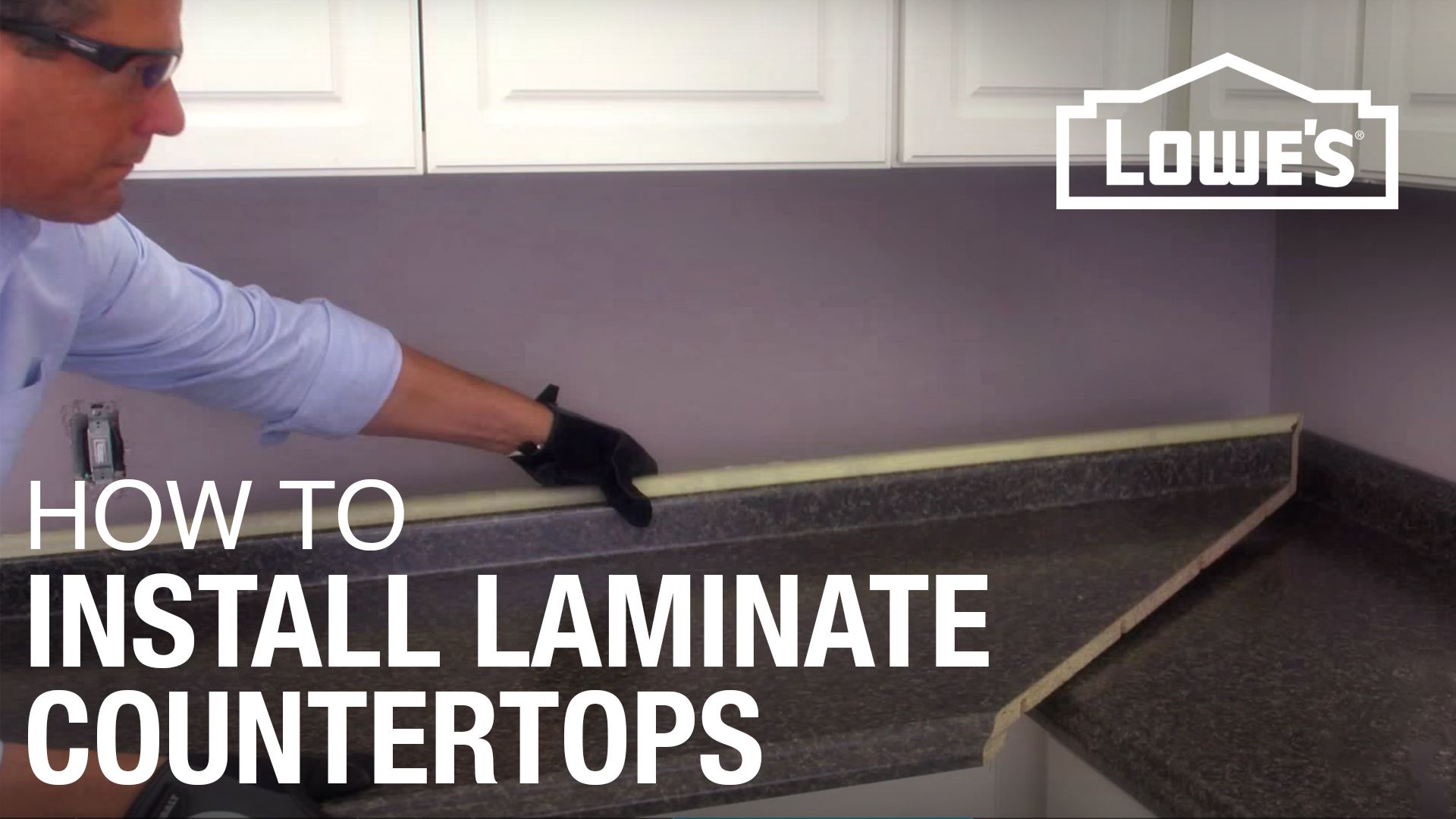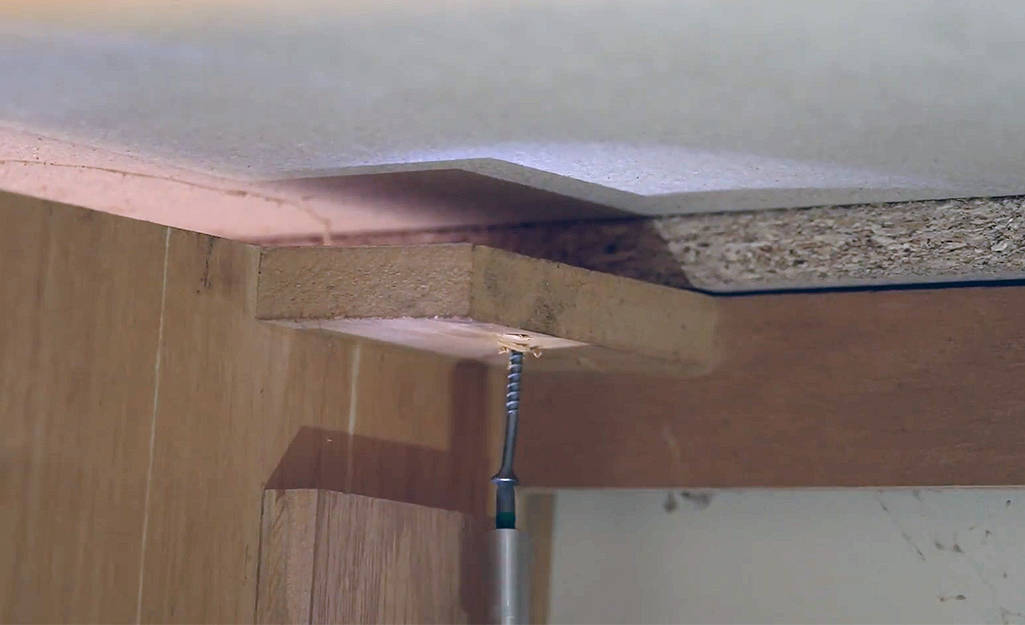Benefits and Drawbacks of Gluing Countertops to Cabinets

Gluing countertops to cabinets is a popular alternative to traditional methods, offering a strong bond and a seamless look. While it can be a cost-effective solution, it’s important to understand the advantages and disadvantages before making a decision.
Advantages of Gluing Countertops to Cabinets
Gluing countertops to cabinets provides several benefits, making it a suitable choice for various kitchen projects.
- Increased Stability: Gluing countertops directly to cabinets creates a solid, unified structure, eliminating potential movement or shifting between the countertop and base cabinets. This enhanced stability is particularly beneficial in kitchens with heavy use or high traffic areas.
- Seamless Appearance: The absence of visible seams or fasteners creates a sleek and integrated look, enhancing the overall aesthetic appeal of the kitchen. This seamless appearance is particularly desirable in contemporary or minimalist kitchen designs.
- Reduced Cost: Gluing countertops to cabinets eliminates the need for additional support structures, such as brackets or cleats, which can significantly reduce material and labor costs. This cost-effectiveness is particularly appealing for budget-conscious homeowners or DIY projects.
Disadvantages of Gluing Countertops to Cabinets
While gluing countertops to cabinets offers several advantages, it’s essential to consider the potential drawbacks before making a decision.
- Difficulty in Repairs: Once glued, separating the countertop from the cabinets can be challenging, making repairs or modifications difficult. This limitation is particularly problematic in situations where future adjustments or replacements might be required.
- Potential for Warping or Cracking: Gluing countertops directly to cabinets can increase the risk of warping or cracking if the materials are not properly matched or if the installation is not performed correctly. This potential issue is more pronounced in humid climates or areas with significant temperature fluctuations.
- Limitations in Countertop Selection: Gluing countertops to cabinets may restrict the selection of countertop materials. Certain materials, such as some types of stone or engineered stone, may not be suitable for gluing due to their weight or thickness. This limitation can affect the overall design and functionality of the kitchen.
Scenarios Where Gluing Countertops to Cabinets is Ideal
Gluing countertops to cabinets is an excellent choice for specific scenarios, particularly when budget and aesthetics are key considerations.
- Small Kitchens: Gluing countertops to cabinets is a space-saving solution for small kitchens, as it eliminates the need for additional support structures that can take up valuable space. This space-efficiency is particularly important in compact kitchens where maximizing functionality is paramount.
- Budget-Conscious Projects: Gluing countertops to cabinets is a cost-effective option, especially for DIY projects or renovations on a tight budget. This cost-saving approach is particularly appealing for homeowners looking to maximize their investment while maintaining a high-quality finish.
Scenarios Where Gluing Countertops to Cabinets is Not Suitable
Gluing countertops to cabinets may not be the best solution for all kitchens, particularly those with demanding usage patterns or complex designs.
- Kitchens with Heavy Use: Gluing countertops to cabinets may not be suitable for kitchens with heavy use, such as commercial kitchens or households with large families. The constant stress and impact from heavy usage can potentially lead to damage or separation of the countertop from the cabinets.
- Countertops with Complex Designs: Gluing countertops to cabinets may not be suitable for countertops with complex designs, such as those with intricate curves or multiple levels. The complexity of these designs can make gluing challenging and increase the risk of uneven or unstable installation.
Materials and Techniques for Gluing Countertops to Cabinets

Gluing countertops to cabinets is a popular choice for homeowners looking for a strong and durable installation. This method offers a seamless look and eliminates the need for bulky brackets or screws. However, selecting the right adhesive and following proper techniques are crucial for a successful and long-lasting bond.
Adhesives for Gluing Countertops to Cabinets
The choice of adhesive depends on the type of countertop material and the weight it will bear.
- Construction Adhesive: This is a versatile adhesive suitable for a wide range of materials, including wood, laminate, and solid surface countertops. It provides strong adhesion and is often used for gluing countertops to cabinets.
- Epoxy Adhesive: Epoxy adhesives are known for their exceptional strength and water resistance, making them ideal for high-traffic areas or countertops exposed to moisture. They offer a strong bond and are suitable for both natural stone and engineered stone countertops.
- Polyurethane Adhesive: Polyurethane adhesives are highly durable and provide a strong bond to a variety of surfaces. They are also moisture-resistant and suitable for outdoor applications.
- Contact Cement: Contact cement is a fast-drying adhesive that provides a strong bond. It is often used for laminates and other thin materials, but it can be challenging to apply and requires precise alignment.
Preparing Countertops and Cabinets for Gluing
Proper preparation is essential for a successful bond.
- Clean the Surfaces: Remove any dust, dirt, grease, or debris from the countertops and cabinet surfaces. Use a cleaning solution suitable for the materials involved. For example, use a mild soap and water solution for laminate countertops and a degreaser for greasy surfaces.
- Sand the Surfaces: Lightly sand the surfaces of both the countertops and cabinets to create a rough texture for better adhesion. Use a fine-grit sandpaper (120-180 grit) and sand in the direction of the wood grain.
- Apply Primer: Apply a primer to the surfaces to improve adhesion and create a uniform surface. Choose a primer compatible with the countertop material and the adhesive.
Clamping Methods for Gluing Countertops to Cabinets
Clamping is essential to ensure proper adhesion and prevent warping during the curing process.
- C-Clamps: C-clamps are versatile and widely used for clamping countertops to cabinets. They provide strong pressure and can be adjusted to fit different sizes.
- Bar Clamps: Bar clamps are ideal for clamping large surfaces, such as long countertops. They provide even pressure and can be adjusted to fit the length of the countertop.
- Spring Clamps: Spring clamps are smaller and easier to use for clamping smaller areas or corners. They are also helpful for holding the countertop in place while the adhesive sets.
Achieving a Smooth and Seamless Finish
Once the adhesive has cured, you can achieve a smooth and seamless finish by:
- Sanding: Use a fine-grit sandpaper (220-400 grit) to sand any uneven areas or seams.
- Filling Gaps: Use a wood filler or epoxy filler to fill any gaps or imperfections.
- Applying Sealant: Apply a sealant to the countertop to protect it from moisture, stains, and scratches.
Comparison of Adhesive Types
| Adhesive Type | Cost | Drying Time | Strength | Suitability for Countertop Materials |
|—|—|—|—|—|
| Construction Adhesive | Low | 24-48 hours | Moderate | Laminate, wood, solid surface |
| Epoxy Adhesive | High | 24-72 hours | High | Natural stone, engineered stone |
| Polyurethane Adhesive | Moderate | 24-48 hours | High | Laminate, wood, natural stone |
| Contact Cement | Low | 15-30 minutes | High | Laminate, thin materials |
Considerations and Best Practices for Gluing Countertops to Cabinets

Gluing countertops to cabinets offers a seamless and visually appealing finish, but it requires careful planning and execution to ensure a successful and long-lasting installation. Several key factors influence the success of this process, including the choice of countertop material, the strength of the cabinets, and the implementation of proper sealing and maintenance practices.
Choosing the Right Countertop Material
The choice of countertop material significantly impacts the gluing process. Factors like weight, moisture resistance, and durability are crucial considerations.
- Weight: Heavier materials, such as granite or quartz, require stronger cabinets and adhesives capable of supporting their weight. Lighter materials, like laminate or engineered stone, are easier to handle and place on cabinets.
- Moisture Resistance: Countertops exposed to water, like those in kitchens or bathrooms, should be made of moisture-resistant materials. Natural stone, engineered stone, and solid surface countertops are generally more resistant to moisture than laminate or wood.
- Durability: Countertop materials should be durable enough to withstand daily use, including scratches, heat, and impacts. For example, granite and quartz are highly durable, while laminate countertops may be more susceptible to scratches and damage.
Impact of Cabinet Construction on the Gluing Process, Gluing countertops to cabinets
The strength and stability of cabinets are essential for successful countertop gluing. Cabinets made of solid wood or plywood offer greater strength and support than those constructed with particleboard or MDF.
- Cabinet Strength: Weak or unstable cabinets can lead to countertop movement, cracks, or even complete failure of the glued joint.
- Cabinet Stability: Cabinets should be properly secured to walls or floors to prevent movement and ensure the countertop remains securely in place.
Preventing Water Damage and Ensuring Longevity
Proper sealing and maintenance are crucial for preventing water damage and ensuring the longevity of glued countertops.
- Sealing: Sealing the countertop with a sealant designed for the specific material protects it from water absorption and stains. Regular resealing, as recommended by the manufacturer, is essential for maintaining the seal’s effectiveness.
- Maintenance: Regular cleaning and maintenance, such as wiping up spills immediately and avoiding harsh chemicals, help prevent damage and preserve the countertop’s appearance.
Professional Assistance for Complex Projects
For complex gluing projects or specialized countertop materials, consulting a professional installer or contractor is highly recommended.
- Specialized Materials: Certain materials, like stone or engineered stone, require specialized tools and techniques for proper installation.
- Complex Projects: Projects involving intricate countertop shapes or complex cabinet configurations may benefit from the expertise of a professional.
Step-by-Step Process of Gluing Countertops to Cabinets
A flowchart illustrating the step-by-step process of gluing countertops to cabinets is presented below. The flowchart highlights key considerations and potential challenges.
| Step | Action | Considerations | Potential Challenges |
|---|---|---|---|
| 1 | Prepare the countertop and cabinets. | Ensure surfaces are clean, dry, and free of debris. | Uneven or rough surfaces can impact adhesion. |
| 2 | Apply adhesive to the countertop and cabinet surfaces. | Use a high-quality adhesive suitable for the countertop material and cabinet construction. | Incorrect adhesive application can lead to uneven bonding. |
| 3 | Align and clamp the countertop to the cabinets. | Ensure the countertop is level and aligned with the cabinets. Use clamps to secure the countertop in place during curing. | Improper alignment can result in an uneven countertop. |
| 4 | Allow the adhesive to cure completely. | Follow the adhesive manufacturer’s curing time recommendations. | Premature use of the countertop can compromise the bond. |
| 5 | Seal the countertop. | Apply a sealant designed for the specific countertop material. | Incorrect sealing can lead to water damage. |
Gluing countertops to cabinets is a popular choice for homeowners who want a sleek and modern look in their kitchen. While it’s a relatively simple process, it’s important to use the right type of adhesive and ensure a strong bond.
Creating a visually appealing space, like a blue accent wall bedroom , can inspire you to create a similar aesthetic in your kitchen. After all, a well-designed kitchen should be a place you enjoy spending time in, just like a cozy bedroom.
So, if you’re considering gluing your countertops, be sure to choose a strong adhesive and follow the manufacturer’s instructions carefully.
Gluing countertops to cabinets can be a great way to create a durable and stylish work surface. If you’re looking for inspiration, consider incorporating a small desk into your bedroom for a dedicated workspace. You can find small desk in bedroom ideas that maximize space and style, and then use the same countertop gluing techniques to create a cohesive look in your bedroom.